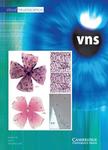版权所有:内蒙古大学图书馆 技术提供:维普资讯• 智图
内蒙古自治区呼和浩特市赛罕区大学西街235号 邮编: 010021

作者机构:MIT Comp Sci & Artificial Intelligence Lab Cambridge MA 02139 USA
出 版 物:《VISUAL NEUROSCIENCE》 (视神经学)
年 卷 期:2009年第26卷第1期
页 面:123-131页
核心收录:
学科分类:1002[医学-临床医学] 1001[医学-基础医学(可授医学、理学学位)] 10[医学]
基 金:National Science Foundation (NSF) Career Award [IIS 0747120] Direct For Computer & Info Scie & Enginr Div Of Information & Intelligent Systems Funding Source: National Science Foundation
主 题:Scene recognition Object segmentation Gist Thumbnails Natural images Blobs
摘 要:The human visual system is remarkably tolerant to degradation in image resolution: human performance in scene categorization remains high no matter whether low-resolution images or multimegapixel images are used. This observation raises the question of how many pixels are required to form a meaningful representation of an image and identify the objects it contains. In this article, we show that very small thumbnail images at the spatial resolution of 32 X 32 color pixels provide enough information to identify the semantic category of real-world scenes. Most strikingly, this low resolution permits observers to report, with 80% accuracy, four to five of the objects that the scene contains, despite the fact that some of these objects are unrecognizable in isolation. The robustness of the information available at very low resolution for describing semantic content of natural images could be an important asset to explain the speed and efficiently at which the human brain comprehends the gist of visual scenes.